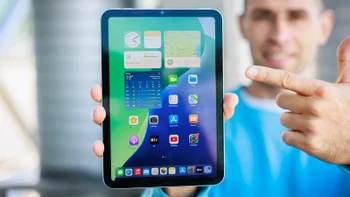LG Optimus G to feature battery with longer life cycle and brighter True HD display

On Saturday, we passed along to you some photographs of what was alleged to be a prototype of the LG Optimus G. This is the device that LG is counting on to compete with top shelf models like the Samsung Galaxy S III. While LG didn't mention the device by name, it has confirmed that its new flagship model will have the new quad-core Qualcomm Snapdragon S4 Pro APQ8064 processor that marries the speed of a quad-core processor with LTE connectivity.
LG has also added some of its own home-cooking to the phone, including a battery that uses new technology from LG Chem to offer a lifetime of 800 charges instead of the usual 500, without any changes in size or weight from traditional smartphone cells. But wait, there's more. LG Display, which produces, hold on, it will comes to us...ah, displays, has a new True HD IPS+ screen. The Korean tech giant says that this display is clearer than AMOLED screens and uses less power. The True HD IPS+ panel has a pixel density of 320ppi and resolution of 768 x 1280. There is no Pentile display here as the display uses the Stripe RGB matrix. The screen presents 470 nits of brightness while using 70% less power when it displays a white background and doesn't have the screen burn-in problem that occassionally happens with an AMOLED display.
LG Innotek together with LG Display has developed the G2 Touch Hybrid Display. This is the result of increasing R&D spending on touchscreen technology, and gets rid of the gap between the glass and LCD panel seen in today's touchscreen devices. The result is a 30% thinner touchscreen with an image that appears to touch your finger without a glass barrier.
With all of this vertical integration in the new LG flagship smartphone, it seems that LG has developed a model that not only will compete with other flagship units, but could surpass them in many ways.
source: LG
"Working closely with our affiliate companies allowed us a degree of control that very few smartphone makers have with their component partners. Our next smartphone will be a game changer for us because we were able to incorporated all the best-of-best technologies from our sister companies with one single objective in mind -– to give customers the best user experience that we were collectively capable of."-Dr. Jong-seok Park, president and CEO of LG Electronics Mobile Communications Company
With all of this vertical integration in the new LG flagship smartphone, it seems that LG has developed a model that not only will compete with other flagship units, but could surpass them in many ways.
LG LOOKS TO VERTICAL INTEGRATION TO DEVELOP
ITS NEXT GENERATION SMARTPHONE
LG Electronics, LG Chem, LG Display, LG Innotek
Collaborate on Most Technologically Advanced Device to Date
SEOUL, Aug. 26 – The next major smartphone from LG Electronics (LG) will be a as significant for the way it was developed as for its performance and specifications. That’s because LG Electronics and its vertically-integrated sister companies LG Chem, LG Display and LG Innotek developed the device together from the start to include each company’s best technology and innovation to set a new standard in the smartphone market.
As the first Quad-Core LTE smartphone to utilize Qualcomm’s latest Snapdragon™ S4 Pro APQ8064 processor, LG’s upcoming device will not only offer blazing fast performance but also longer battery life, thinner profile, brighter display and a new touchscreen panel technology as a result of the vertically-integrated development process.
LG Chem, Korea’s oldest and largest chemical company and a global innovator in electric car batteries, developed a new battery that offers greater energy capacity without compromising on size and weight. Standard mobile phone batteries have a lifespan of 500 charges in best-case conditions. Utilizing LG Chem’s high-density technology, the battery that was developed for the new flagship smartphone provides more power than other similarly-sized batteries by running 60 percent more efficiently. The new battery has a lifespan of 800 cycles, a first for a mobile device.
Industry leader LG Display’s contribution to the project was in the development of a new mobile display that is clearer than AMOLED displays but requires less power. LG Display’s True HD IPS+ Display is sharper than today’s AMOLED displays due to its high pixel density of 320ppi (1280x768 pixels) and Stripe RGB IPS Panel. The new display is capable of generating 470 nits of brightness while consuming 70 percent less power compared when displaying a white background. Furthermore, True HD IPS+ Display does not suffer from screen burn-in as AMOLED displays have been known to do.
Partnering with LG Display, solution-provider LG Innotek developed the G2 Touch Hybrid Display after investing significantly to raise its R&D capabilities in touchscreen technology. The G2 Touch Hybrid Display is a unibody unit that eliminates the gap between the glass and the LCD panel as found in traditional touchscreens. As a result, the thickness of LG Innotek’s touchscreen panel was reduced by 30 percent and displays images that seem to “touch” the fingertip without the glass creating a barrier in between.
“Working closely with our affiliate companies allowed us a degree of control that very few smartphone makers have with their component partners,” said Dr. Jong-seok Park, president and CEO of LG Electronics Mobile Communications Company. “Our next smartphone will be a game changer for us because we were able to incorporated all the best-of-best technologies from our sister companies with one single objective in mind – to give customers the best user experience that we were collectively capable of.”
# # #
Media Contact:
LG Electronics, Inc.
Jinny Lee
+82 2 3777 3624
LGnews@lge.com
www.LGnewsroom.com
ITS NEXT GENERATION SMARTPHONE
LG Electronics, LG Chem, LG Display, LG Innotek
Collaborate on Most Technologically Advanced Device to Date
SEOUL, Aug. 26 – The next major smartphone from LG Electronics (LG) will be a as significant for the way it was developed as for its performance and specifications. That’s because LG Electronics and its vertically-integrated sister companies LG Chem, LG Display and LG Innotek developed the device together from the start to include each company’s best technology and innovation to set a new standard in the smartphone market.
As the first Quad-Core LTE smartphone to utilize Qualcomm’s latest Snapdragon™ S4 Pro APQ8064 processor, LG’s upcoming device will not only offer blazing fast performance but also longer battery life, thinner profile, brighter display and a new touchscreen panel technology as a result of the vertically-integrated development process.
LG Chem, Korea’s oldest and largest chemical company and a global innovator in electric car batteries, developed a new battery that offers greater energy capacity without compromising on size and weight. Standard mobile phone batteries have a lifespan of 500 charges in best-case conditions. Utilizing LG Chem’s high-density technology, the battery that was developed for the new flagship smartphone provides more power than other similarly-sized batteries by running 60 percent more efficiently. The new battery has a lifespan of 800 cycles, a first for a mobile device.
Industry leader LG Display’s contribution to the project was in the development of a new mobile display that is clearer than AMOLED displays but requires less power. LG Display’s True HD IPS+ Display is sharper than today’s AMOLED displays due to its high pixel density of 320ppi (1280x768 pixels) and Stripe RGB IPS Panel. The new display is capable of generating 470 nits of brightness while consuming 70 percent less power compared when displaying a white background. Furthermore, True HD IPS+ Display does not suffer from screen burn-in as AMOLED displays have been known to do.
Partnering with LG Display, solution-provider LG Innotek developed the G2 Touch Hybrid Display after investing significantly to raise its R&D capabilities in touchscreen technology. The G2 Touch Hybrid Display is a unibody unit that eliminates the gap between the glass and the LCD panel as found in traditional touchscreens. As a result, the thickness of LG Innotek’s touchscreen panel was reduced by 30 percent and displays images that seem to “touch” the fingertip without the glass creating a barrier in between.
“Working closely with our affiliate companies allowed us a degree of control that very few smartphone makers have with their component partners,” said Dr. Jong-seok Park, president and CEO of LG Electronics Mobile Communications Company. “Our next smartphone will be a game changer for us because we were able to incorporated all the best-of-best technologies from our sister companies with one single objective in mind – to give customers the best user experience that we were collectively capable of.”
# # #
Media Contact:
LG Electronics, Inc.
Jinny Lee
+82 2 3777 3624
LGnews@lge.com
www.LGnewsroom.com
Follow us on Google News













Things that are NOT allowed:
To help keep our community safe and free from spam, we apply temporary limits to newly created accounts: